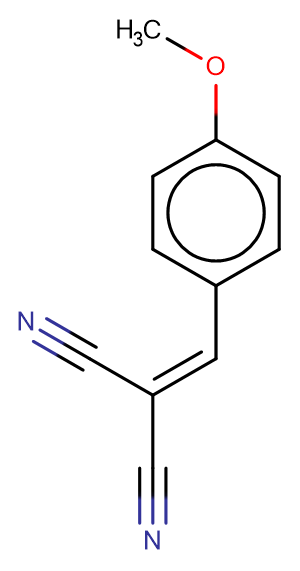
Tyrphostin A1
CAS No. 2826-26-8
Tyrphostin A1( Tyrphostin 1 | AG9 )
Catalog No. M20945 CAS No. 2826-26-8
Tyrphostin A1 is an inhibitor of EGFR tyrosine kinase .
Purity : >98% (HPLC)
 COA
COA
 Datasheet
Datasheet
 HNMR
HNMR
 HPLC
HPLC
 MSDS
MSDS
 Handing Instructions
Handing Instructions
| Size | Price / USD | Stock | Quantity |
| 5MG | 27 | In Stock |


|
| 10MG | 42 | In Stock |


|
| 25MG | 80 | In Stock |


|
| 50MG | 113 | In Stock |


|
| 100MG | 147 | In Stock |


|
| 200MG | Get Quote | In Stock |


|
| 500MG | Get Quote | In Stock |


|
| 1G | Get Quote | In Stock |


|
Biological Information
-
Product NameTyrphostin A1
-
NoteResearch use only, not for human use.
-
Brief DescriptionTyrphostin A1 is an inhibitor of EGFR tyrosine kinase .
-
DescriptionTyrphostin A1 is an inhibitor of EGFR tyrosine kinase .
-
In Vitro——
-
In Vivo——
-
SynonymsTyrphostin 1 | AG9
-
PathwayAngiogenesis
-
TargetEGFR
-
RecptorEGFR
-
Research Area——
-
Indication——
Chemical Information
-
CAS Number2826-26-8
-
Formula Weight184.19
-
Molecular FormulaC11H8N2O
-
Purity>98% (HPLC)
-
SolubilityDMSO:100 mg/mL (542.92 mM)
-
SMILESCOc1ccc(C=C(C#N)C#N)cc1
-
Chemical Name2-[(4-Methoxyphenyl)methylidene]propanedinitrile
Shipping & Storage Information
-
Storage(-20℃)
-
ShippingWith Ice Pack
-
Stability≥ 2 years
Reference
1.Du C Bright J J Sriram S . Inhibition of CD40 signaling pathway by tyrphostin A1 reduces secretion of IL-12 in macrophage Th1 cell development and experimental allergic encephalomyelitis in SJL/J mice[J]. Journal of Neuroimmunology 2001 114(1-2):69-79.
molnova catalog



related products
-
CGP77675
CGP77675 is a potent and selective inhibitor of Src family kinase with IC50s of 5-20 and 40 nM for the phosphorylation of peptide substrates and autophosphorylation of purified Src. CGP77675 exhibits anticancer activity.
-
Peiminine
Peiminine is an effective inhibitor for lung inflammation and pulmonary fibrosis in a rat model of bleomycin-induced lung injury.
-
Alflutinib
Alflutinib (AST-2818, ASK120067) is a third generation EGFR mutation selective tyrosine kinase inhibitor.



 Cart
Cart
 sales@molnova.com
sales@molnova.com


